|
Getting your Trinity Audio player ready...
|
Throughout history, willows have been among the only trees capable of regenerating from a fallen branch—a seemingly dead piece can root itself and grow into a new tree when planted in moist soil. This remarkable resilience stands in stark contrast to the willow’s reputation as a symbol of grief and sorrow, revealing the profound duality at the heart of Willow Tree Symbolism: the dance between death and rebirth, sorrow and healing.
Standing beneath a weeping willow last autumn, watching its slender branches sweep the surface of a still pond, I couldn’t help but feel both melancholy and strangely comforted. This paradox isn’t accidental—it reflects the willow’s unique place in our collective consciousness, spanning thousands of years and dozens of cultures.
In the pages that follow, we’ll explore the rich tapestry of willow tree symbolism across spiritual traditions, from biblical references to Native American ceremonies, Celtic rituals to Japanese folklore. You’ll discover what these graceful trees reveal about resilience, emotional depth, feminine power, and spiritual transitions—and perhaps recognize why the willow has been whispering to human hearts since time immemorial.
Table of Contents
- 1 Key Takeaways
- 2 The Spiritual Symbolism of the Willow Tree
- 2.1 What Does the Willow Tree Symbolize?
- 2.2 Willow Tree Symbolism Across Biblical Traditions
- 2.3 Celtic and European Willow Traditions
- 2.4 Native American Wisdom and the Willow
- 2.5 Willow Tree Symbolism in Literature and Mythology
- 2.6 The Willow’s Meaning in Eastern Traditions
- 2.7 Dreaming of Willow Trees
- 2.8 Willow Tree Meaning in Love and Relationships
- 3 Natural Symbolism: The Willow Tree Among Sacred Animal and Insect Messengers
- 4 FAQ
- 4.1 What does the willow tree symbolize in biblical texts?
- 4.2 Where are willow trees mentioned in the Bible?
- 4.3 What is the significance of willows in the Feast of Tabernacles?
- 4.4 Do willow trees represent tears or sadness in Scripture?
- 4.5 Are weeping willows specifically mentioned in the Bible?
- 4.6 What spiritual lessons can we learn from biblical willow symbolism?
- 4.7 How were willows used in ancient Jewish ceremonies?
- 4.8 How do willows compare to other biblical trees in symbolism?
- 4.9 What is the spiritual meaning of a willow tree?
- 4.10 Why are willows associated with both sorrow and healing?
- 4.11 What does the willow’s regenerative ability symbolize?
- 4.12 How do willows appear in Biblical traditions?
- 4.13 What can we learn from the willow’s “strength through flexibility” paradox?
- 4.14 How do different cultures view the willow tree?
- 4.15 What does dreaming about willow trees signify?
Key Takeaways
- The willow tree embodies the powerful paradox of resilience through flexibility, teaching that bending with life’s challenges rather than resisting them represents true strength in both spiritual growth and relationships.
- Across diverse cultures from Celtic to Native American traditions, willows serve as sacred bridges between worlds, similar to how cardinal birds and blue jays function as spiritual messengers in various belief systems.
- The weeping willow’s dual symbolism of sorrow and healing reflects nature’s profound wisdom—containing both medicinal properties (salicin) and visual metaphors for emotional release through its tear-like branches.
- Biblical references to willows highlight their connection to both remembrance and renewal, appearing in contexts of exile and lamentation (Psalm 137) as well as celebration during the Feast of Tabernacles.
- Like the phoenix rising from ashes or the butterfly emerging transformed, the willow’s ability to regenerate from fallen branches represents the spiritual journey through death into new life—a universal symbol of resurrection.
The Spiritual Symbolism of the Willow Tree

What Does the Willow Tree Symbolize?
The willow tree stands as one of nature’s most profound spiritual teachers, its graceful, sweeping branches offering wisdom that transcends cultures and time. At its core, willow tree symbolism embodies the delicate balance between strength and surrender—a living paradox that speaks to the human experience.
Unlike the unyielding oak that might snap in fierce winds, the willow bends and sways, demonstrating the power of flexibility. This remarkable adaptability has made the willow a universal symbol of resilience and emotional endurance.
The most recognizable variety—the weeping willow—carries particularly potent symbolism. Its drooping branches create a curtain-like effect, resembling tears falling toward the earth. This visual connection to grief has cemented the willow tree symbolism in death rituals across many societies, where it often marks gravesites or memorial gardens.
Yet despite this association with mourning, the willow simultaneously represents healing and growth. Its bark contains salicin, a compound similar to aspirin, used for centuries to relieve pain and reduce fever. According to the Royal Botanic Gardens at Kew, willow-based medicines date back at least 4,000 years, with records from ancient Sumer and Egypt documenting its therapeutic applications.
This duality creates a powerful spiritual message: our deepest sorrows often contain the seeds of our greatest healing.
Willow Tree Symbolism Across Biblical Traditions
The willow appears several times throughout scripture, carrying significant meaning in biblical contexts. Perhaps most memorably, willow tree symbolism in the Bible emerges in Psalm 137:1-2: “By the rivers of Babylon we sat and wept when we remembered Zion. There on the willows we hung our harps.”
This poignant image depicts exiled Israelites in Babylon, hanging their musical instruments on willow trees as they grieved for their homeland. Here, the willow becomes a symbolic witness to profound national and spiritual loss—a tree that holds space for sorrow when human shoulders cannot bear the weight alone.
In Leviticus 23:40, willows appear in a more celebratory context as one of the Four Species used during the Feast of Tabernacles (Sukkot). The verse instructs: “On the first day you are to take branches from luxuriant trees—from palms, willows of the brook and other leafy trees—and rejoice before the LORD your God for seven days.”
The willow’s inclusion in this joyful harvest celebration highlights another dimension of its symbolism: the capacity for renewal and abundance. While the tree may weep, it also thrives near water, constantly growing and regenerating—much like the spiritual meaning of frogs in biblical contexts, which also symbolize transformation and rebirth through their connection to water.
Celtic and European Willow Traditions
In Celtic tradition, the willow held sacred status among the druids, who recognized it as one of the seven sacred trees. Known as “Saille” in the ancient Ogham tree alphabet, the willow represented cycles, rhythms, and the feminine divine.
Celtic wisdom keepers understood the willow tree symbolism spirituality as deeply connected to lunar energy. The tree’s association with water, intuition, and emotional depths aligned perfectly with the moon’s influence over tides and the subconscious mind.
The willow was also revered for its connection to Brigid, Celtic goddess of poetry, healing, and smithcraft. Her sacred flame—tended by priestesses in Kildare—was traditionally surrounded by a hedge of willows, creating a sanctuary where the boundaries between worlds grew thin.
European folklore took this mystical connection further, giving rise to legends of willow spirits and enchantresses who drew power from these magnificent trees. Shakespeare himself nodded to this tradition when he wrote of Ophelia’s tragic end beneath a “weeping willow” in Hamlet—a tree that seemed to share in her sorrow.
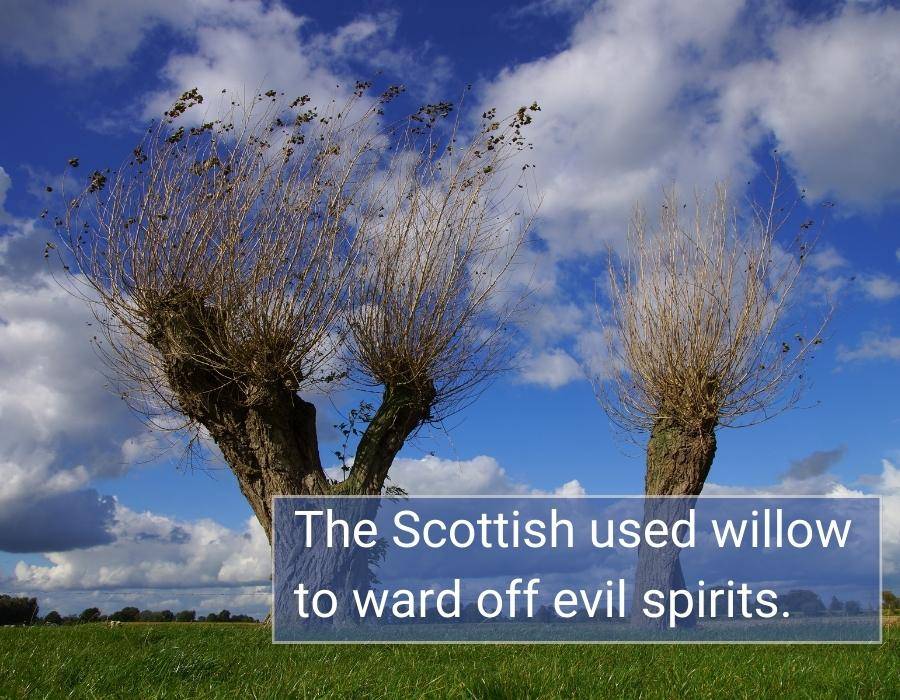
Native American Wisdom and the Willow
Among many Indigenous North American tribes, willow tree meaning in Native American traditions centered on its practical and spiritual uses. The flexibility of willow branches made them ideal for crafting fishing traps, baskets, and the framework for sweat lodges—sacred spaces of purification and spiritual renewal.
The Lakota people, for example, included willow in their sacred Chanunpa (peace pipe) ceremonies, recognizing the tree’s connection to water and emotion. According to Lakota elder Wallace Black Elk, the willow represents the West direction on the medicine wheel—the place of introspection, twilight, and the autumn of life.
Just as red cardinals carry spiritual meaning as messengers between worlds, the willow served as a conduit between the physical and spiritual realms in many tribal cosmologies. Medicine people would often seek visions while sitting beneath willows, believing the tree could help filter and clarify spiritual messages.
Many tribes also recognized the willow’s healing properties, using its bark for pain relief and its flexible branches as cordage for binding wounds. This practical application reflected a deeper spiritual understanding: that which is flexible enough to bend with life’s challenges ultimately possesses the greatest strength.
The willow’s message speaks across time and culture—reminding us that in our moments of deepest sorrow, we are also closest to our capacity for healing. Like the blue jay’s appearance in spiritual contexts, the willow tree appears in our lives as both messenger and medicine, calling us to embrace both our tears and our resilience.
Willow Tree Symbolism in Literature and Mythology
The graceful, sweeping form of the willow tree has captivated writers and storytellers throughout history, serving as a powerful metaphor for human emotions and spiritual journeys. Willow tree symbolism in literature appears across centuries, cultures, and genres, offering readers a visual anchor for complex emotional landscapes.
In Shakespeare’s works, the weeping willow frequently appears during scenes of heartbreak or lost love. In “Hamlet,” Ophelia’s tragic drowning takes place near a willow that “grows aslant the brook,” its branches hanging over the water like tears—a visual echo of her despair. The willow here represents not only sorrow but the peculiar beauty found within grief, a reminder that even in our darkest moments, nature offers silent companionship.
Kenneth Grahame’s beloved children’s classic “The Wind in the Willows” uses the willow as a backdrop for adventure and friendship. The tree’s association with riverbanks and sheltered spaces creates a sense of safety and belonging—showcasing how willow tree symbolism often connects to themes of home and sanctuary.
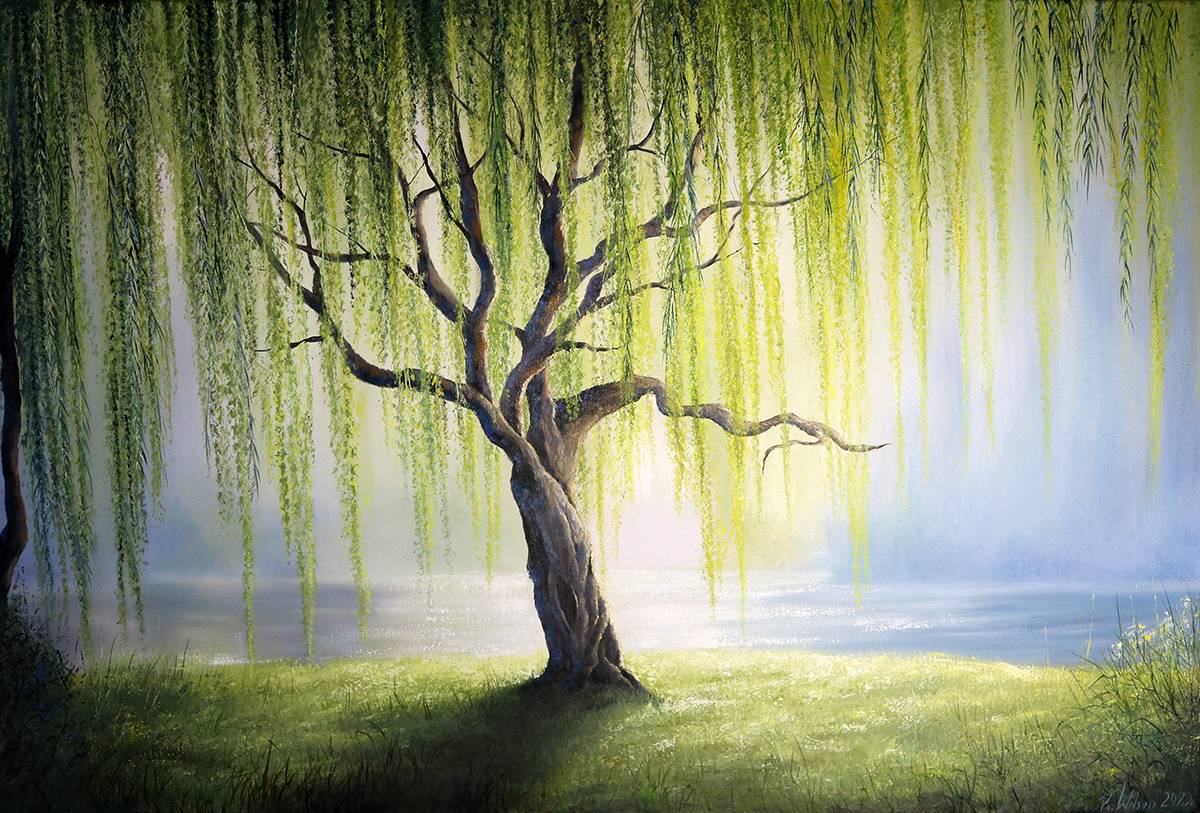
The Willow’s Meaning in Eastern Traditions
In Japanese culture, the willow tree (yanagi) carries profound spiritual significance. Ancient Shinto beliefs recognized willows as dwelling places for kami (spirits), with their swaying branches creating a natural gateway between worlds. Buddhist texts sometimes describe the Bodhi Tree under which the Buddha attained enlightenment as having willow-like qualities—flexible yet enduring, representing the ideal balance of strength and surrender in spiritual practice.
The willow tree symbolism spirituality in Chinese tradition associates the tree with springtime, renewal, and feminine grace. According to traditional Chinese medicine, the willow embodies the principle of “bending without breaking”—a quality valued not just in physical health but in emotional and spiritual resilience. This mirrors the blue jay’s spiritual meaning as a symbol of adaptability and persistence seen in many North American traditions.
Chinese brush paintings often feature willows to symbolize grace, immortality, and the enduring nature of life beyond physical limitations. The renowned Tang Dynasty poet Li Bai wrote extensively about willows, using their image to explore themes of longing, separation, and the bittersweet nature of memory.
Dreaming of Willow Trees
When willows appear in our dreamscapes, they often carry messages from our deepest emotional waters. Dreams featuring these graceful trees typically invite introspection and emotional honesty, particularly regarding grief, flexibility, or personal growth.
Standing beneath a weeping willow in a dream often signals a need to acknowledge buried sorrows. Rather than representing prolonged sadness, this dream scenario frequently appears when we’re ready to release emotional burdens we’ve been carrying. The willow’s protective canopy creates a safe space for this intimate inner work.
Dreams of willows thriving after storms can symbolize personal resilience and emotional recovery. According to dream analyst Lauri Loewenberg, such dreams often emerge during healing phases after significant life challenges, serving as encouraging reminders of our innate capacity to bend without breaking.
When dream willows appear near water—their natural habitat—the symbolism deepens. Water represents our emotional landscape, while the willow’s roots reaching into that water suggest our ability to draw strength from emotional depths. This mirrors how the spiritual meaning of frogs connects to transformation through emotional waters in biblical symbolism.
Willow Tree Meaning in Love and Relationships
Perhaps one of the most beautiful aspects of willow tree meaning love lies in its demonstration of strength through flexibility. In loving relationships, the willow teaches us that true resilience comes not from rigid boundaries but from deep roots and adaptive responses.
Ancient Celtic wedding traditions sometimes included handfasting ceremonies performed beneath willow trees, signifying the couple’s commitment to grow together, bend without breaking, and find strength in flexibility. The tree’s association with the feminine divine also connected it to fertility, nurturing, and the cycles of love’s seasons.
According to relationship psychologist Dr. John Gottman, whose research at The Gottman Institute has transformed our understanding of successful relationships, flexibility and emotional responsiveness—qualities embodied by the willow—are key predictors of relationship longevity. Partners who can “bend” during conflict rather than standing rigid in their positions demonstrate what the willow has silently taught for centuries.
The weeping willow tree spiritual meaning in relationships reminds us that vulnerability is not weakness but rather the courage to let our emotions flow freely. Like the willow that thrives with its roots in water and its branches reaching toward sky, healthy relationships balance grounded stability with the freedom to express our fullest selves.
When we embrace the willow’s wisdom in love, we learn that relationships, like trees, need both deep roots and flexible branches—commitment paired with adaptability, tradition alongside growth, and the strength to stand tall while remaining gentle enough to sway with life’s inevitable winds.
Natural Symbolism: The Willow Tree Among Sacred Animal and Insect Messengers
The willow tree shares its spiritual significance with a diverse array of animal and insect messengers that appear throughout world traditions. Like the phoenix rising from ashes, the willow’s ability to regenerate from seemingly dead branches symbolizes extraordinary resilience and rebirth. This connection to transformation makes willows kindred spirits to butterfly symbolism, where metamorphosis represents spiritual awakening and the soul’s journey.
When exploring ladybug symbolism, we find parallels to the willow’s protective qualities. Just as willows create sanctuaries with their sweeping branches, ladybugs have long been considered bearers of good fortune and divine protection. In many European traditions, a ladybug landing on you signals incoming blessings—similar to how finding peaceful refuge beneath a willow can herald emotional healing.
Dragonfly symbolism offers another fascinating parallel to willow wisdom. These iridescent insects, which spend much of their lifecycle near water, represent transformation and emotional depth. Like the willow’s deep connection to emotional waters, dragonflies teach us to move beyond surface appearances and dive into deeper understanding. Both remind us that true beauty often emerges from life’s most fluid and changeable aspects.
The owl’s spiritual meaning as a guardian of wisdom resonates with the willow’s ancient knowledge. Both have been venerated by shamanic traditions worldwide as keepers of secrets and guides through darkness. The willow, like the owl, thrives in the liminal spaces between worlds—the owl navigating the threshold between day and night, while the willow bridges land and water, physical and spiritual realms.
Symbols of Transformation and Family Connections
Among animals that represent family, the willow holds a special place alongside creatures like penguins and wolves. The willow’s interconnected root systems mirror the deep bonds of familial connection, while its protective canopy evokes the nurturing aspect of family relationships. Penguin spiritual meaning centers on community, loyalty, and perseverance—qualities that willow trees, with their remarkable endurance through harsh conditions, exemplify in the plant kingdom.
Mourning dove meaning intersects with willow symbolism through associations with peace, love, and gentle transitions. Both carry the duality of sorrow and comfort—the dove’s melancholic coo resembling the sound of wind through willow branches. In dreams and synchronistic encounters, both can appear as messengers offering solace during life’s challenging passages, much like finding a small white feather meaning connection with loved ones who have passed.
The willow’s representation as a symbol of healing places it alongside the lioness meaning of protective strength and eagle feather symbolism of spiritual connection. When seeking support during times of transformation, these natural symbols offer guidance through their ancient wisdom. Like fireflies illuminating summer nights, the willow reminds us that even in our darkest moments, regenerative light remains available to those who embrace life’s continuous cycles of death and rebirth.
FAQ
What does the willow tree symbolize in biblical texts?
In the Bible, willow trees often symbolize mourning, grief, and remembrance. They appear in Psalm 137 where the Israelites hung their harps on willow trees during their Babylonian exile, representing sorrow and longing for home. Willows also symbolize resilience through adversity.
Where are willow trees mentioned in the Bible?
Willow trees appear in several biblical passages including Leviticus 23:40 (for the Feast of Tabernacles), Psalm 137:1-2 (the Babylonian exile), Job 40:22, and Isaiah 44:4. Each reference carries symbolic significance related to water, growth, or ceremonial purposes.
What is the significance of willows in the Feast of Tabernacles?
In Leviticus 23:40, willows are among the “branches of leafy trees” used to construct booths during Sukkot (Feast of Tabernacles). They represent God’s provision, the journey through wilderness, and the temporary nature of earthly dwelling as Jews commemorated their ancestors’ nomadic period.
Do willow trees represent tears or sadness in Scripture?
Yes, willows are strongly associated with weeping and lamentation in biblical contexts. Their drooping branches evoke tears, while their riverside growth connects them to water imagery. Psalm 137 powerfully illustrates this connection as exiled Israelites wept by Babylon’s rivers among the willows.
Are weeping willows specifically mentioned in the Bible?
The Bible doesn’t explicitly name “weeping willows” with that term. Instead, it refers generally to willows (aravim in Hebrew). The association with weeping comes from Psalm 137’s context of sorrow and the natural appearance of willow species with their characteristic drooping branches.
What spiritual lessons can we learn from biblical willow symbolism?
Willows teach resilience amid suffering, thriving despite tears. Their strong roots near water remind us to stay connected to spiritual nourishment (Psalm 1:3). The willow’s flexibility demonstrates how bending with life’s storms—rather than breaking—exemplifies spiritual strength and adaptability.
How were willows used in ancient Jewish ceremonies?
Willows formed part of the “Four Species” (arba’at ha-minim) used during Sukkot celebrations. Worshippers would wave willow branches (aravot) in procession around the altar. This practice symbolized thanksgiving for harvests, prayer for rain, and commemoration of wilderness wandering after the Exodus.
How do willows compare to other biblical trees in symbolism?
Unlike the mighty cedar (strength and majesty) or the olive tree(peace and prosperity), willows represent humility and sorrow. While the fig tree symbolizes abundance and the palm victory, willows embody resilience through grief. Their water-seeking nature parallels the spiritual thirst described in Psalm 42.
What is the spiritual meaning of a willow tree?
Willow trees symbolize flexibility, resilience, and emotional healing across many traditions. Their ability to bend without breaking represents adaptability in life’s challenges. As sacred bridges between worlds, willows connect the physical and spiritual realms, offering wisdom about transformation and emotional release.
Why are willows associated with both sorrow and healing?
Weeping willows embody this duality through their tear-like branches that symbolize grief while containing salicin, a natural pain reliever. This reflects nature’s wisdom that emotional release (tears) is part of the healing journey. Their ability to thrive near water represents emotional depth and cleansing.
What does the willow’s regenerative ability symbolize?
The willow’s remarkable ability to grow new trees from fallen branches symbolizes resurrection and spiritual rebirth. This regenerative power represents the soul’s journey through challenges toward renewal. Like the butterfly’s metamorphosis, willows remind us that transformation often follows life’s most difficult passages.
How do willows appear in Biblical traditions?
In Biblical texts, willows represent both remembrance and renewal. They appear in Psalm 137 during the Babylonian exile as symbols of lamentation, while also featuring in the joyful Feast of Tabernacles celebrations. This dual presence highlights their connection to both suffering and spiritual restoration.
What can we learn from the willow’s “strength through flexibility” paradox?
The willow teaches that true strength comes not from rigid resistance but from adaptive flexibility. By bending with life’s storms rather than fighting against them, we develop resilience. This wisdom applies to spiritual growth, emotional healing, and navigating relationships with grace.
How do different cultures view the willow tree?
Celtic traditions associate willows with moon goddesses and intuition. Native American cultures view them as protective symbols. In Chinese folklore, willows ward off evil spirits. Despite cultural differences, most traditions recognize willows as mediators between worlds and symbols of life’s continuous cycles.
What does dreaming about willow trees signify?
Dreams featuring willow trees often indicate a need for emotional release or healing. They may appear during transitional life phases, suggesting it’s time to embrace flexibility. Willows in dreams can also represent ancestral wisdom, intuitive insights, or the need to find balance between strength and gentleness.
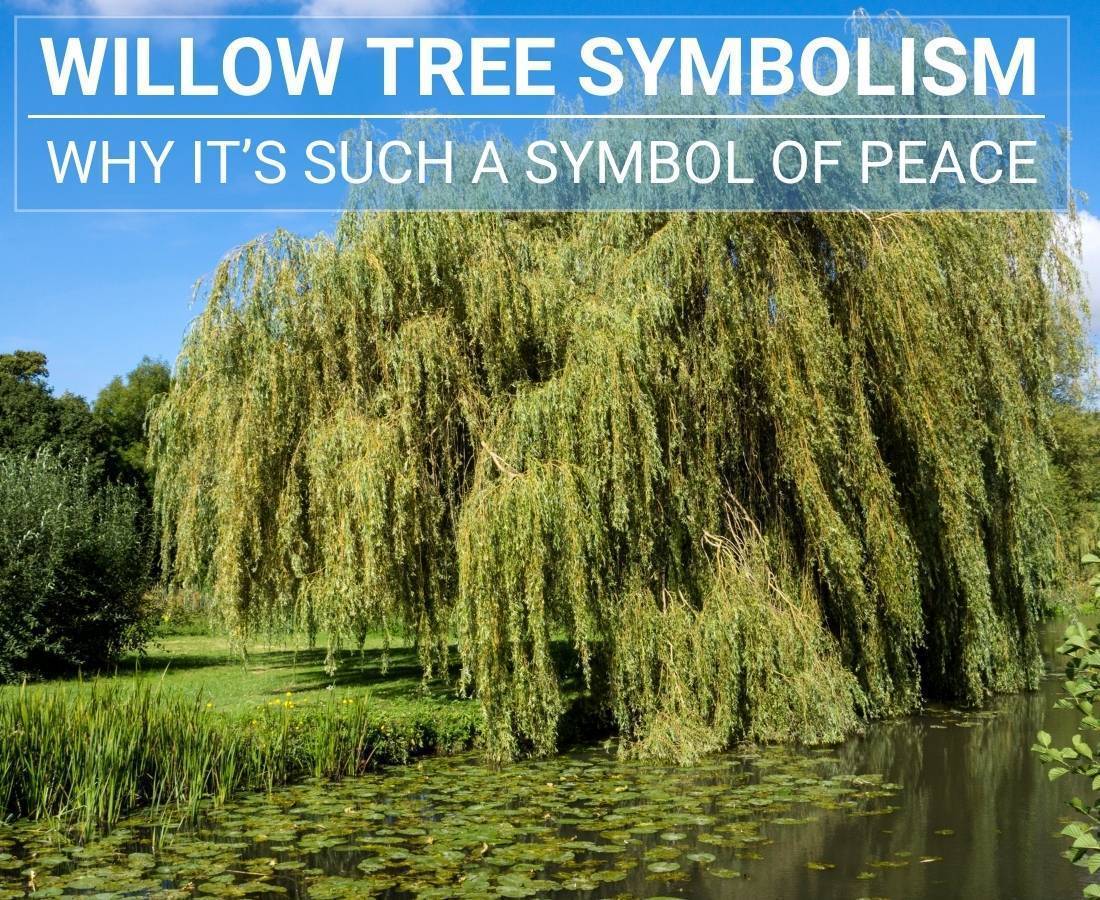
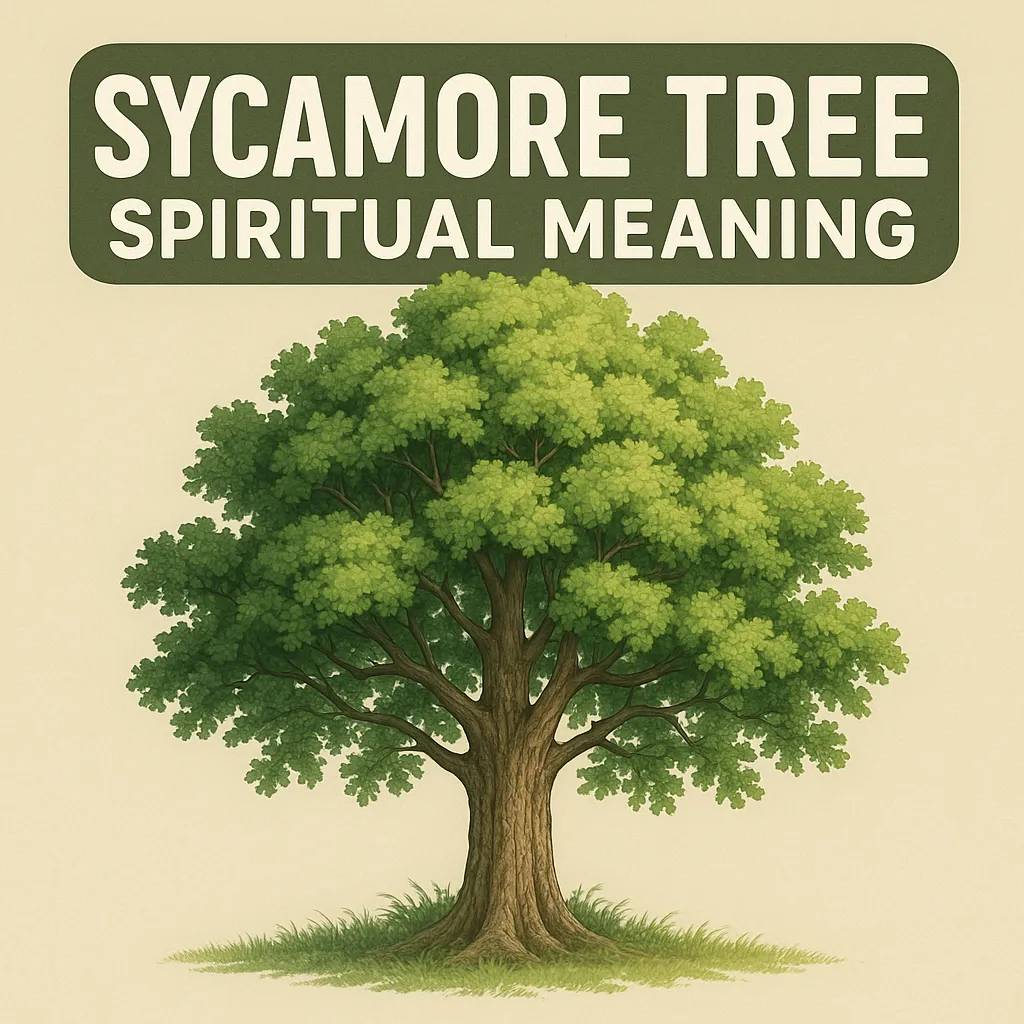
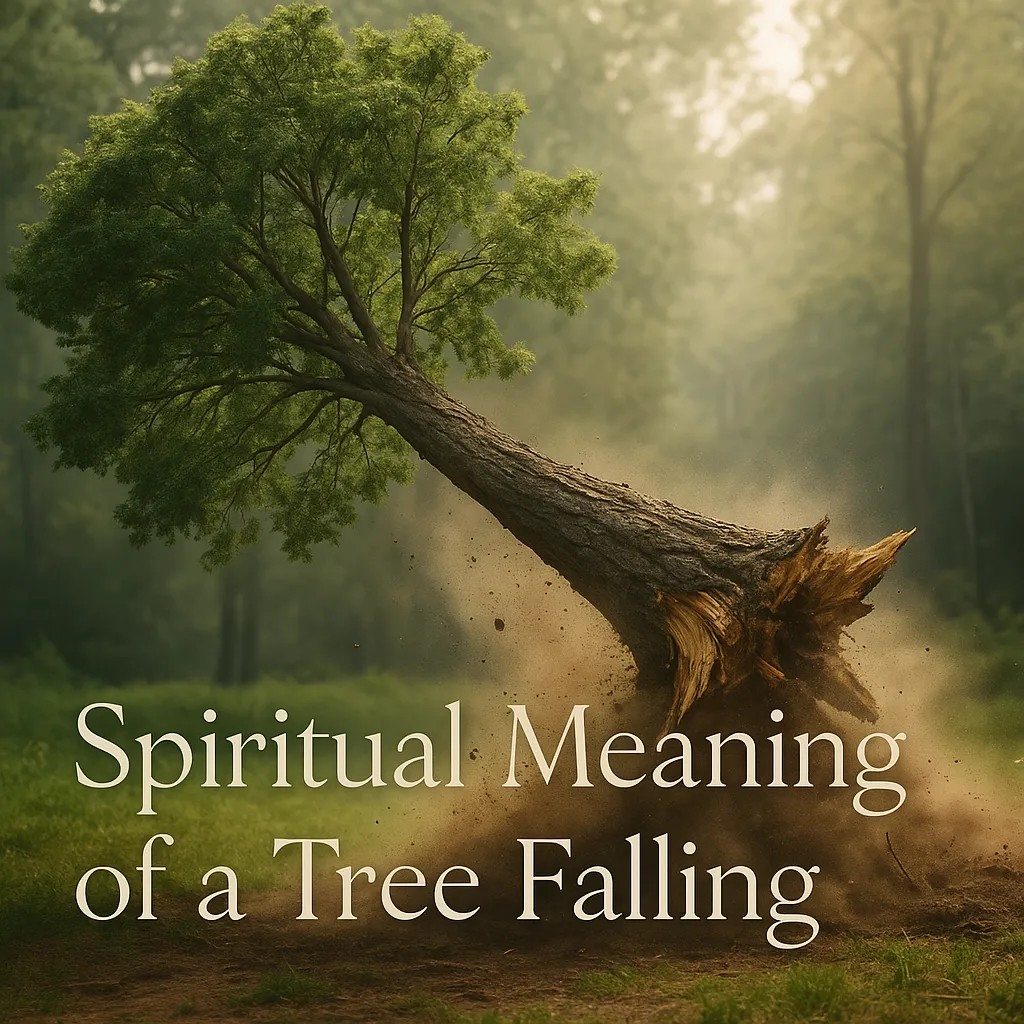
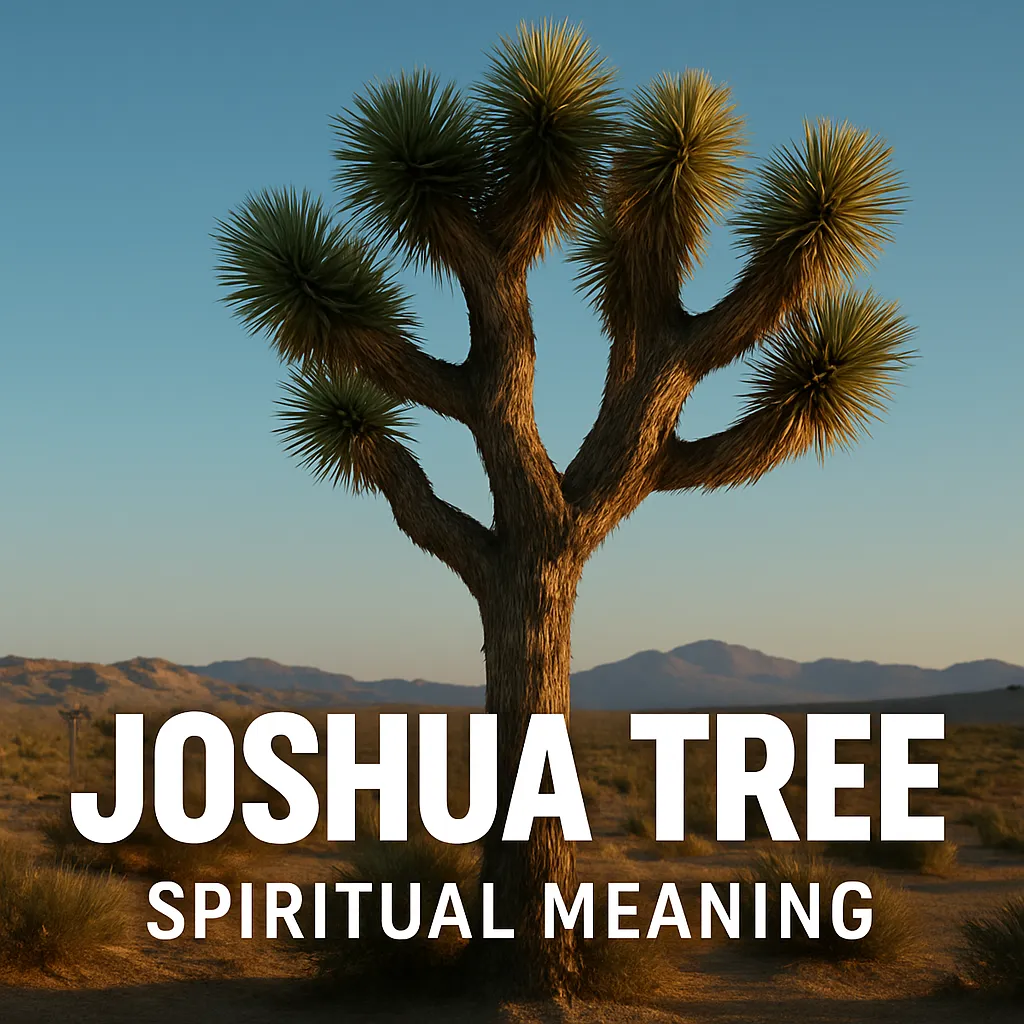
I enjoyed your article very much. Could I use it as resource for my book I am writing?
Dear Jessica,
Thanks for your kind words! You’re welcome to use our article for your book. Please attribute the information to our site and provide a backlink if possible. Good luck with your book!
Best,
Richard